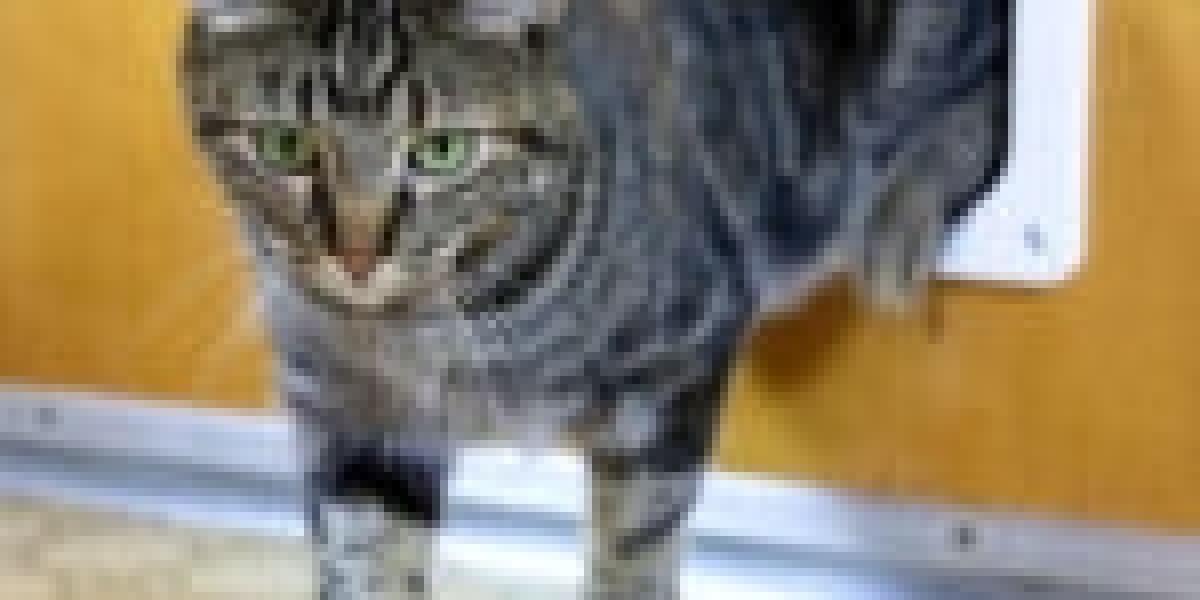The Ultimate Guide to Cat Flap Replacement: Why, When, and How
As a cat owner, it's vital to provide your feline good friend with a comfortable and hassle-free way to enter and leave your home. A cat flap, also known as a cat door, is an easy and effective solution that permits your cat to come and go as it pleases. Nevertheless, like any other home item, cat flaps can use out in time, needing replacement. In this post, we'll check out the reasons that cat flap replacement is required, the indications that indicate it's time for a brand-new one, and a step-by-step guide on how to replace a cat flap.

Why Replace a Cat Flap?
There are several factors why cat flap replacement is necessary:
- Wear and tear: Cat flaps go through continuous usage, which can lead to use and tear on the hinges, seals, and other moving parts.
- Weather damage: Exposure to rain, snow, and extreme temperatures can trigger the cat flap to weaken, leading to water leakages and drafts.
- Insect control: Old or damaged cat flaps can supply an entry point for unwanted insects, such as rodents, birds, or pests.
- Energy efficiency: A brand-new cat flap can assist reduce heat loss and energy usage, making your home more energy-efficient.
- Improved security: modern cat flap installation cat flaps frequently come with sophisticated security functions, such as lockable doors and magnetic seals, to avoid unauthorized entry.
Indications that Indicate it's Time for a New Cat Flap
If you see any of the following indications, it's most likely that your 24/7 cat flap installer flap needs to be replaced:
- Leaks and drafts: If you discover water or air dripping through the cat flap, it's time to consider a brand-new one.
- Difficulty opening or closing: If the cat flap becomes stuck or hard to open or close, it's most likely that the hinges or seals are broken.
- Noise: If the cat flap makes excessive sound when opening or closing, it may be an indication that the moving parts are used out.
- Insect invasion: If you discover bugs entering your home through the cat flap, it's time to change it with a brand-new one.
How to Replace a Cat Flap: A Step-by-Step Guide
Changing a cat flap is a reasonably easy DIY task that can be completed with fundamental tools and products. Here's a step-by-step guide:
Materials required:
- A brand-new cat flap
- Screwdriver or drill
- Determining tape
- Pencil or marker
- Wood screws (if necessary)
- Weatherstripping (if essential)
Instructions:
- Measure the existing cat flap: Measure the width and height of the existing cat flap to ensure that the brand-new one fits perfectly.
- Remove the old cat flap: Use a screwdriver or drill to remove the screws holding the old cat flap in location. Carefully pry the cat flap out of the door or wall.
- Clean the location: Clean the area around the old cat flap to remove any particles or dirt.
- Mark the position of the new cat flap: Use a pencil or marker to mark the position of the brand-new cat flap on the door or wall.
- Drill pilot holes: Drill pilot holes for the screws that will hold the new cat flap in place.
- install cat flap in wall the new cat flap: Insert the new cat flap into the door or wall and screw it into location.
- Add weatherstripping (if needed): Apply weatherstripping around the edges of the cat flap to prevent drafts and leaks.
Idea:
- Choose a cat flap that is appropriate for your cat's size and type.
- Consider a trained cat flap installer flap with innovative security functions, such as lockable doors and magnetic seals.
- Use a level to guarantee that the cat flap is set up straight and level.
- Test the cat flap before installing it to guarantee that it works efficiently and silently.
Often Asked Questions:
- Q: How long does it require to change a high-quality Cat flap installation flap?A: The time it takes to change a cat flap depends on the intricacy of the job and the individual's DIY skills. On average, it takes about 30 minutes to an hour to finish the job.
- Q: Can I change a cat flap myself?A: Yes, replacing a cat flap is a fairly simple DIY project that can be finished with fundamental tools and materials. However, if you're not comfy with DIY tasks, it's suggested to hire a professional.
- Q: How typically should I change my cat flap?A: The frequency of changing a cat flap depends on use and weather conditions. Usually, a cat flap must be replaced every 5-7 years.
- Q: What are the advantages of a brand-new cat flap?A: A brand-new cat flap can improve energy effectiveness, security, and convenience for your cat. It can also minimize sound and avoid pest problem.
Conclusion:
Replacing a cat flap is a simple and vital task that can improve the convenience and convenience of your feline friend. By following the step-by-step guide described in this article, you can quickly change your old cat flap with a new one. Remember to pick a cat flap that is suitable for your cat's size and breed, and think about sophisticated security features to avoid unauthorized entry.
Additional Resources:
- Best Cat Flaps for Energy Efficiency: [link]
- How to Choose the Right Cat Flap: [link]
- Do It Yourself Cat Flap Installation Tips: [link]
By supplying your cat with a comfortable and hassle-free way to go into and leave your home, you can enhance its overall health and joy. Keep in mind to replace your cat flap every 5-7 years to ensure that it remains in good working condition.








